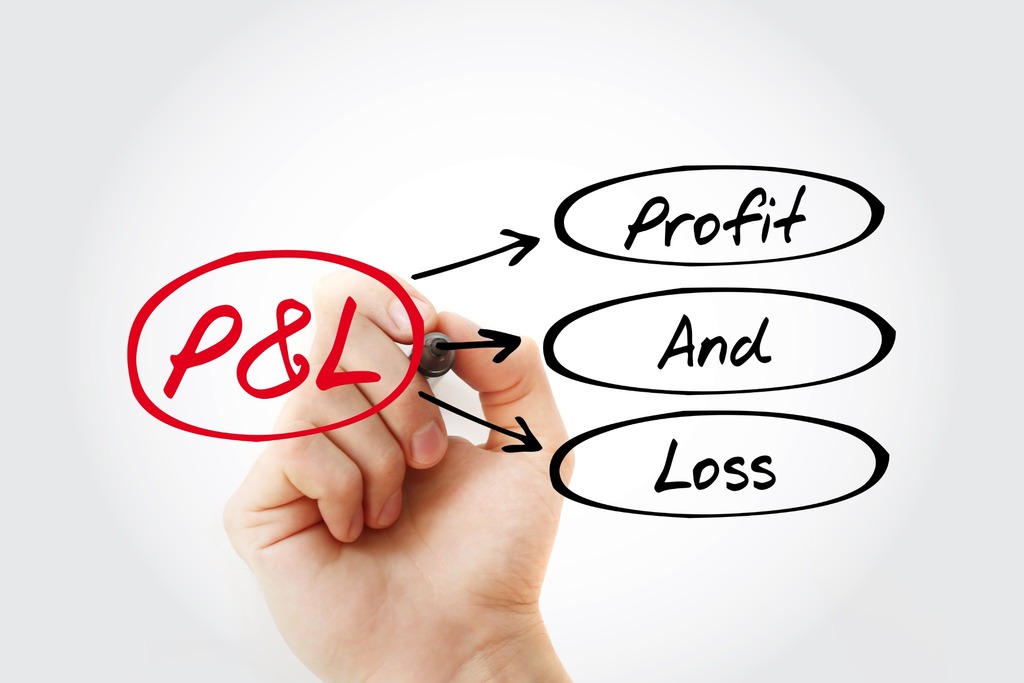
Where Did My Money Go? Part Two: Examining Your P&L Report
Where did my money go is such a common question that it gets back-to-back articles from us! Our last post looked at cash flow for small businesses. This time, we’re going to dig into your P&L report and balance sheet.
The profit and loss statement is one of the most valuable pieces of information for business owners and managers to examine. It is also where many questions arise as people try to figure out where their money has gone.
The Fisher Bookkeeping firm is passionate about helping businesses understand and protect their cash flow and bottom line. We help clients around the country from our offices in Portland, OR, and outside Lexington, KY. Schedule your free consultation to get started with outsourced bookkeeping for your business.
The Age-Old Question: Where Did the Money Go?
Business owners should be meeting with their bookkeepers regularly to go over their P&L statements. If you aren’t, then that is your first piece of homework. Set up consistent times to review this report.
Some people want to do this step each month, but many do it quarterly instead. Either way, you need to stay in communication with your bookkeeper and with your money.
The most common disconnect that comes up is when managers or owners look at the account balances in their online banking portal, and they don’t match the P&L report.
Perhaps the statement shows $100,000 in profit for a year, but there is only $30,000 in the bank. Or on the flip side, your P&L shows a loss, but there is still cash sitting in your accounts. So what’s going on? Let’s dig in.
Balance Sheet vs. P&L
Before examining where the money has gone or how your cash is flowing, it’s crucial to understand the P&L report and the balance sheet. These two statements provide a vital look at where your money is now and where it has been, but they do it differently.
The balance sheet and P&L are like maps for your money. They can help you see where your money is right now, as well as where it has been and where it’s going. But you need the right map to get the correct information. A globe won’t show you how to get to your new doctor’s office. And a city map won’t help you drive across the country. You have to use the proper tool.
Balance Sheet
Your balance sheet gives you a snapshot of your account balances at a specific moment. For example, business owners or managers frequently check the balance sheet at the end of the month or quarter. If you are using QuickBooks, the report will show amounts as of the end of that day.
Balance sheet data is always about one particular time and can answer the question, “How much money do we have right now?”
It includes all assets and liabilities, along with shareholder equity. When looking at your company’s balance sheet, you will see:
- Cash and Cash Equivalent Assets – Items such as cash, short-term CDs, and Treasury bills will be here.
- Stock and Other Marketable Securities – This category will include things that can become liquid assets quickly.
- Receivables – Money that customers owe the company will be here on the balance sheet.
- Inventory – This section accounts for anything the business has available to sell.
- Debt – Any outstanding debt the company owes will be here.
- Overhead – Items such as rent and utilities will be in this category.
- Payables – This section covers payroll and money owed to vendors.
- Shareholder Equity – Subtracting liabilities from assets gives you shareholder equity.
The balance sheet is an essential financial document that investors and lenders will see.
P&L Report
Your company’s profit and loss statement gives a view of the money and cash flow over time. This report is not a pinpoint snapshot. Rather, it examines a period such as one month, one quarter, or the fiscal year to show you what your money did during that time.
The P&L goes by other names, too. If you’ve heard of an income statement or statement of operations, this is it. It’s also where we get the idea of a company’s “bottom line.” The top line of the report shows your revenue. The bottom line shows your profit or lack thereof.
You will see how much revenue is coming in and from which sources. And you will see how much is going out and to whom. Again, this report is always showing what has happened for a specified period.
When looking at your profit and loss statement, you see your business’ earning ability during that time. It also allows you to determine the yes or no answer to the question, “Is this company currently profitable?”
The differences between the balance sheet and the P&L statement often result in owners wondering where the money went.
Some items are on the balance sheet but not on the profit and loss statement:
- Purchases of equipment or other significant assets
- Investment in research and development
This discrepancy may mean that your P&L shows more profit than you currently have cash sitting in your accounts on the balance sheet.
Cash vs. Accrual Basis Accounting
Another piece that’s important to understanding where your money went is to clarify cash vs. accrual basis of accounting. These two processes account for income and expenses differently.
In accrual basis accounting, your reports will show income and expenses on the day invoices are due. This happens no matter when you or your vendors actually pay those invoices. It also accounts for payroll on the day you run it, not the day you pay it.
Businesses with revenue over $5 million per year must use the accrual method for taxes.
However, in the cash basis process, you account for dollars as they go out the door or come in the door. No matter when an invoice is due, the accounting of that income or expense doesn’t happen until the payment occurs. Similarly, this method accounts for payroll when it’s paid, not when you run it.
So, Where Did My Money Go?
Understanding these reports and accounting processes now lets us get back to the question at hand. They hold the clues as to why your P&L is making you ask it in the first place.
If your profit and loss statement shows a number that you can’t fathom, then something has changed on the balance sheet to cause this. Here are three common scenarios that may explain what’s happening.
1. You’ve Incurred Debt
Perhaps you’ve invested in your business by financing equipment or services or adding to a credit card balance. This debt does not show up on your P&L because it is a liability. You will see interest payments you’ve made in the expense column but not the full amount of debt. It does, however, sit on your balance sheet. If you bought equipment, it sits there as an equipment asset, as well as a liability in the amount of the debt you took on to purchase the equipment.
2. You’ve Paid Down Debt
If you’ve been able to pay off debt, that’s great! Lowering your liabilities helps your balance sheet look better to investors or lenders. However, that outlay of money to reduce or eliminate debts does eat up your cash. The good news is that it means you have more equity (aka value) in the business.
3. You’ve Bought Assets
Purchasing furniture, inventory, or other big-ticket items for your business can require some big spending. This cash leaves your account, and the items become other assets on your balance sheet. But they do not show up on your P&L statement (the inventory will show up as you sell it).
Bookkeeping Has Many Layers
Understanding what your company’s money is doing at any given time or over the course of weeks and months and years can be overwhelming. There is a lot of data and overlap as you try to make sense of various reports.
The Fisher Bookkeeping team is happy to be an outsourced bookkeeping option for businesses of any size. We have extensive experience in many industries and are here to help you thrive.
For help in establishing or cleaning up your accounts, let’s talk. We can help you feel confident and prepared as your money works for you.
About the Author Barb Fisher
Barb is the CEO of Fisher Bookkeeping, an outsourced bookkeeping consultancy that provides small businesses with a full-service financial department. Her favorite aspect of work is to break down the accounting to meaningful bits, so entrepreneurs can make a powerful difference in their own business. She's also a power lifter (squat: 215, DL: 270).
Related Posts
My Journey with Hello7 Coaching Transformed My Bookkeeping Practice
Growth Scale Coaching: Benefits for Bookkeepers and Financial Managers
Preparing Your Business for a Successful Exit
7 Essential Bookkeeping Tips for Busy Entrepreneurs







